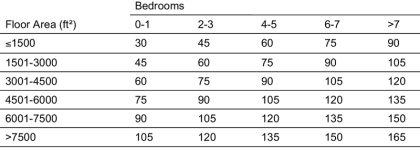Continuous Ventilation and Title 24
As houses have been tightened up over the last twenty years due to energy cost concerns and the use of large sheet goods and housewrap, what used to be normal infiltration and exfiltration has been significantly reduced. In the meantime, we have introduced thousands of chemicals into our houses through building materials, cleaners, finishes, packaging, furniture, carpets, clothing and other products.
The California Title 24 energy standards have always assumed adequate indoor air quality would be provided by a combination of infiltration and natural ventilation and that home occupants would open windows as necessary to make up any shortfall in infiltration. However, Commission sponsored research on houses built under the 2001 Title 24 standards has revealed lower than expected overall ventilation rates, higher than expected indoor concentration of chemicals such as formaldehyde and many occupants who do not open windows regularly for ventilation.
Starting on January 1st, 2010 all new homes (and existing homes with additions over 1000 sq. ft.) were required to be equipped with mechanical whole house ventilation. The ventilation rate (cfm) depends on the size of the house and number of bedrooms.
There are three generic solutions to meeting the Title 24 continuous outside air ventilation requirement:
- Exhaust ventilation
- Supply ventilation
- Combination of supply and exhaust ventilation
Use the chart below to quickly calculate the required continuous ventilation CFM for your residential project:
More information on Title 24 continuous ventilation requirements including exhaust ventilation, supply ventilation, combination ventilation, intermittent ventilation, and control and operation of continuous ventilation systems.
(Excerpted from the CEC Title 24 Residential Compliance Manual)

